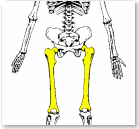Principles of Color: Week Four
Written: Aug 27 2005, revised 8/8/2011, by Donna YoungThis Page - Book & Chapter
- AOP LifePac Electives
- Unit II: Principles of Color
1. The Color Wheel
2. Color Phenomenon
3. The Meaning of Color
Holly started Unit 2 and below is a repeat of last Friday's work.
(Last Friday: She
started Unit 2. She read pages 1-4 and completed the test on page 5.)
Monday
Pages 6-8, Do activity 1.1 Basic Color Mixing (create a color wheel from red, yellow, and blue). Draw the color wheel as described, paint the 12 colors of the color wheel using only the colors, red, yellow, and blue. Make sure it is the student and not you that cleans up and puts away afterward.
Activity 1.1: Color Wheel - Draw or Print
Choose whether the student will either draw a color wheel for activity 1.1 or use one of the color wheels at Exploring Color Theory. For us, it depended on how much time we had. Drawing the color wheel is always preferred if there is time. If you don't have a compass handy, use other round objects to trace around such as a dinner plate, spice bottles, or other small round items of appropriate size.
Tuesday
Pages 9-11, Study The Tone Wheel and explain
it, then draw it on a plain piece of paper. Choose one primary color and do
Activity 1.2 Value Scale in Color.
NOTE: The rest of the colors should be
done over the next 5 school days. The six colors for this activity are: red,
blue, yellow, green, purple, orange.
Activity 1.2: Value Scale in Color
Have the student follow the instructions on page 11 and draw this at least once. Drawing it every time is best, but if there is not enough class time, use the Scale Chart I at Exploring Color Theory.
Wednesday - Friday
Choose a color from the remaining primary and secondary colors and do activity 1.2

This is two rows from one of Holly's color scales. It's labeled. As you can see, more practice at this would be helpful. Take more days than is allotted in this schedule if you believe your student would benefit from additional practice at mixing colors in this controlled exercise.
Note: If the mixed paint yields muddy colors and it is not user error, please buy a different type of paint!
Borrowed From Color Theory
 Tint: Color with
white added.
Tint: Color with
white added.
 Tone: Color with
gray or its complement added.
Tone: Color with
gray or its complement added.
 Value: The
relative darkness or lightness of a color.
Value: The
relative darkness or lightness of a color.
 Intensity:
The strength of a color, especially the degree to which it lacks its
complementary color.
Intensity:
The strength of a color, especially the degree to which it lacks its
complementary color.
NEXT - WEEK 5  The Color Wheel, continued
The Color Wheel, continued


 Printable Files and Quiz
Printable Files and Quiz


